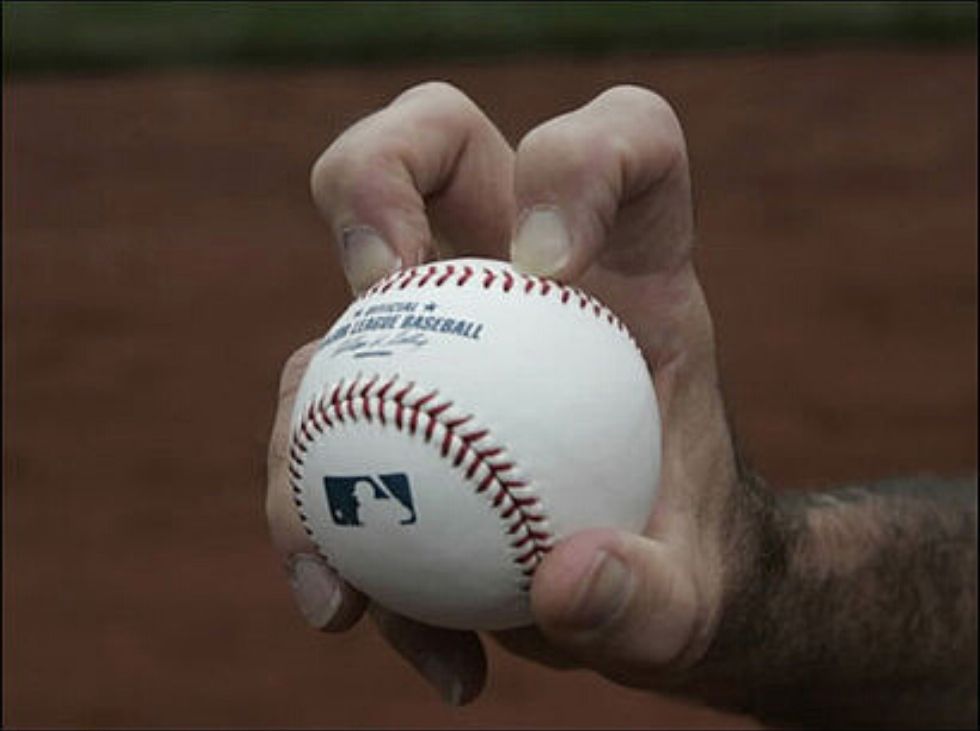Step up to the plate and prepare to enter the realm where precision meets power, where strategy intertwines with skill. Welcome to the world of baseball’s strike zone.
As you step onto the mound or grip the bat, you are about to embark on a journey that delves into the intricate dynamics of this elusive and ever-changing realm. The strike zone baseball, like a canvas awaiting the artist’s brushstrokes, serves as the stage for the battle between pitcher and batter. It is a realm where every pitch, every swing, every decision holds the potential to shape the course of the game.
In this article, we will dissect the dimensions, rules, and strategies that govern the strike zone, exploring the evolution and psychology behind its creation. We will also relive the legendary moments etched in baseball history and ponder the ongoing debate surrounding automated strike zones.
Get ready to swing for the fences and unlock the secrets of baseball’s most captivating arena.
The Dimensions of the Strike Zone
Get ready to feel the adrenaline rush as we dive into the dimensions of the strike zone! Understanding the strike zone dimensions is crucial for both pitchers and hitters in the game of baseball.
The strike zone is a three-dimensional area, approximately from the batter’s knees to their armpits and spanning the width of home plate. It is essential for pitchers to have a good understanding of the strike zone dimensions to accurately throw pitches within that area. Likewise, batters need to be aware of the strike zone dimensions to determine whether a pitch is hittable or not.
Strike zone accuracy is a key factor in the game, as it affects the outcome of pitches, counts, and ultimately, the game itself. By understanding and exploiting the strike zone dimensions, players can gain a competitive edge and increase their chances of success.
The Rules of the Strike Zone
Imagine yourself stepping up to the plate, ready to take on the challenge of deciphering the intricate rules that govern the elusive territory where pitches are either deemed strikes or balls.
To fully understand the dynamics of the strike zone, it’s important to recognize the significance of pitch framing. Pitch framing refers to the art of catchers subtly moving their mitts to give the illusion of a well-placed pitch, influencing umpires to call more strikes. This technique can greatly benefit a team by tilting the odds in their favor.
Additionally, it’s crucial to acknowledge the influence of umpire bias. Umpires, being human, are susceptible to personal biases that can unintentionally affect their calls. These biases may stem from factors such as player reputation or game context.
Understanding these nuances allows players and teams to strategically navigate the strike zone and gain an edge in the game.
The Strategy of Pitching in the Strike Zone
To effectively pitch in the strike zone, you must carefully analyze the batter’s tendencies and exploit their weaknesses, as evidenced by the statistic that pitchers who consistently hit the corners of the zone have a significantly higher strikeout rate. By understanding the dynamics of the strike zone and the preferences of individual batters, pitchers can strategically choose their pitches to maximize their chances of getting strikes. Pitching strategy in the strike zone requires a mix of precision, velocity, and deception to keep batters off balance and guessing. The ability to consistently locate pitches in the strike zone is a valuable skill that can lead to success on the mound. By studying the data and analyzing the trends, pitchers can develop a game plan that takes advantage of the strike zone dynamics to outsmart the hitters.
The Strategy of Hitting in the Strike Zone
You can maximize your chances of success at the plate by strategically analyzing the pitcher’s tendencies and exploiting their weaknesses. When it comes to hitting in the strike zone, there are several key techniques and factors to consider.
First, pitch selection is crucial. You need to study the pitcher’s repertoire and understand their tendencies in different counts. Look for patterns in their pitch selection, such as their go-to pitch in certain situations.
Additionally, analyzing the pitcher’s release point and arm angle can give you valuable insights into the movement and location of their pitches. By understanding these details, you can better anticipate the pitch and adjust your swing accordingly.
It’s also important to stay disciplined and patient at the plate, waiting for your pitch and not chasing pitches outside the strike zone.
By employing these strategies and techniques, you can increase your chances of making solid contact and finding success at the plate.
The Evolution of the Strike Zone
In discussing the evolution of the strike zone, it’s important to consider the historical changes that have occurred over time.
From the early days of baseball to the present, the strike zone has undergone significant modifications, impacting the way the game is played.
Additionally, advancements in technology have played a crucial role in determining the accuracy of umpires in calling balls and strikes. This provides a more objective measurement of the strike zone.
The Historical Changes in the Strike Zone
Contractions are used extensively in spoken and written English, allowing for a more natural flow of conversation and making the language more accessible. When discussing the historical changes in the strike zone, it is crucial to understand the impact of these alterations on the game of baseball. Here are four key points to consider:
1. Frustration: The historical strike zone changes have led to frustration among players, coaches, and fans alike. The inconsistency in calling strikes and balls has sparked controversy and heated debates.
2. Strategy shift: The changes in the strike zone have forced players to alter their approach at the plate. Hitters now have to be more selective and adapt to the evolving strike zone to maximize their chances of success.
3. Pitcher dominance: Some historical strike zone changes have favored pitchers, leading to a decrease in offensive production. This has resulted in a shift towards a more pitcher-dominated game.
4. Rule adjustments: The controversies surrounding the strike zone have prompted the league to make rule adjustments in an attempt to standardize the zone and ensure fairness in the game.
Understanding the historical changes in the strike zone is crucial to comprehending the dynamics of baseball and the ongoing debates surrounding the strike zone controversies.
The Impact of Technology on Umpire Accuracy
Imagine the sheer thrill of witnessing the impact technology has had on umpire accuracy, revolutionizing the game and leaving no room for doubt or controversy. The implementation of AI technology has significantly influenced the accuracy of umpires in calling strikes and balls, enhancing the fairness and integrity of the game.
With automated strike zones, the challenges of human error and subjectivity are minimized, as the technology provides consistent and objective calls. However, the adoption of automated strike zones poses its own set of challenges. The technology must be fine-tuned to accurately determine the strike zone for each individual batter, taking into account factors such as height and stance. Additionally, the cost and logistical considerations of implementing this technology across all levels of baseball must be carefully considered.
Nonetheless, the impact of AI technology on umpire accuracy is undeniable, setting a new standard for fairness in the game.
The Psychology of the Strike Zone
Mastering the psychology of the strike zone is the key to becoming a fearsome batter. When it comes to hitting a baseball, it’s not just about physical skill and technique, but also about understanding the psychological factors at play.
The strike zone is not a fixed, objective entity; it is a subjective judgment made by the umpire. The batter’s goal is to decipher the umpire’s decision-making process and adjust their approach accordingly.
Psychological factors such as pitch recognition, anticipation, and decision-making come into play when a batter is determining whether to swing or not. Research has shown that experienced batters are more adept at reading the pitcher’s cues and making split-second decisions.
By understanding the psychology of the strike zone, batters can increase their chances of success and become more formidable opponents.
Famous Strike Zone Moments in Basebal-hitter, as these moments are truly a testament to the greatness of the game of baseball.
Memorable Home Runs and Game-Winning Hits
In the realm of baseball, where every pitch and swing can make or break a game, there are moments that etch themselves into the annals of history. As we transition from the thrilling world of perfect games and no-hitters, we now delve into the realm of memorable home runs and game-winning hits.
These game-changing walk-offs and clutch postseason hits have the power to electrify stadiums and leave fans in awe. They embody the essence of pressure-filled moments, where a single swing can turn the tide of a game. From the crack of the bat to the eruption of the crowd, these unforgettable moments showcase the resilience, skill, and determination of players who rise to the occasion when it matters most.
Join us as we explore the breathtaking drama and sheer excitement that comes with these unforgettable plays.
The Debate on Automated Strike Zones
Contrary to popular belief, the heated debate on automated strike zones is tearing the baseball community apart.
The automated strike zone controversy centers around the use of technology to determine whether a pitch is a ball or a strike.
Advocates argue that automated strike zones would eliminate human error, ensuring a consistent and fair playing field. They believe it would have a positive impact on player performance by reducing the number of incorrect calls.
On the other hand, opponents argue that the human element is an integral part of the game and that automated strike zones would take away from the excitement and strategy. They fear it would diminish the role of the catcher and alter the dynamics of the game.
As the debate rages on, it remains to be seen whether baseball will embrace this technological advancement or stick to tradition.
Appreciating the Artistry of the Strike Zone
Take a moment to appreciate the skill and precision required to consistently throw pitches that graze the edge of the plate, causing batters to hesitate and question whether to take a chance on swinging.
For example, imagine a pitcher like Jacob deGrom, known for his ability to paint the corners with his fastball, leaving even the most seasoned hitters in awe of his mastery of the strike zone.
Appreciating the subtleties of the strike zone involves understanding the art of pitch framing. Catchers have the ability to subtly manipulate their glove and body positioning to make close pitches appear more favorable to the umpire. This artistry can make a significant impact on the outcome of a game, as a well-executed pitch frame can turn a ball into a strike.
The best catchers have mastered this skill, allowing them to steal strikes for their pitchers and gain an advantage over the opposing team.
Frequently Asked Questions
### How does the strike zone differ between different baseball leagues and levels of play?
The strike zone varies between different baseball leagues and levels of play. International standards determine the strike zone variations, while collegiate and professional levels have discrepancies. These variations and discrepancies affect the game significantly.
What are the consequences for a batter if they swing at a pitch outside of the strike zone?
If you swing at a pitch outside the strike zone, the consequences for batters can be dire. You risk missing the ball, striking out, and giving the pitcher an advantage. To exploit the strike zone, batters must have discipline and patience.
How do umpires determine whether a pitch is inside or outside of the strike zone?
Umpires determine pitch location by visually judging whether the pitch crosses the plate within the strike zone. They use their experience, training, and knowledge of the rulebook to make accurate calls. The umpire’s role is crucial in maintaining fairness and consistency in the game.
Are there any specific pitching techniques or strategies that can be used to exploit the strike zone?
To exploit the strike zone, you can use pitch selection and catcher’
Conclusion
In conclusion, understanding the dynamics of baseball’s strike zone is crucial for both pitchers and hitters. The dimensions and rules of the strike zone play a significant role in the strategy employed by players.
The evolution of the strike zone and the psychology behind it add another layer of complexity to the game. From famous moments in baseball history to the ongoing debate on automated strike zones, the artistry of the strike zone is appreciated by those who truly comprehend its intricacies.
Like a finely tuned instrument, the strike zone orchestrates the symphony of baseball with and grace.s framing techniques. The key is to strategically choose pitches that are more likely to be called strikes and for the catcher to subtly manipulate the presentation of the pitch to make it appear more favorable to the umpire.




